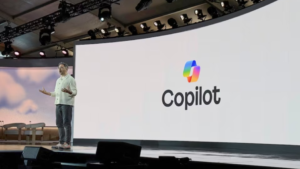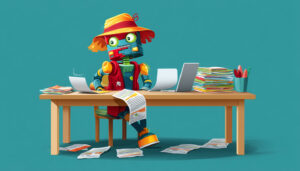Examining Microsoft’s Copilot for Gaming: A Solution in Search of a Problem

Understanding Microsoft’s Copilot for Gaming: A Tool in Search of a Purpose
Microsoft’s Copilot for Gaming has sparked debates across the tech community. Some see it as a transformative tool that could revolutionize how games are developed and enjoyed, while others question its necessity and whether it addresses real challenges in the gaming world.
What is Microsoft’s Copilot for Gaming?
Microsoft’s Copilot for Gaming is an innovative tool designed to assist game developers and players alike by leveraging artificial intelligence. It aims to simplify various tasks within game creation, provide support during gameplay, and enhance overall user experience.
Key Features of Copilot for Gaming
Assistance in Game Development: Copilot can offer suggestions and generate code snippets, making the development process more efficient. This can significantly reduce the time and effort required by developers, allowing them to focus on creative aspects.
In-Game Support: For players, Copilot serves as an intelligent guide, providing tips, strategies, and information tailored to their gameplay style. This feature can enhance engagement and learning, particularly for newcomers.
- Integration with Popular Platforms: Copilot is designed to work seamlessly with leading game engines and platforms, ensuring that developers can easily incorporate it into their existing workflows.
The Ambiguity of Need
Despite its promising features, many industry experts express mixed feelings about the tool’s actual necessity. Here are a few of the concerns:
Lack of Clear Problems to Solve
Real-World Context: Critics argue that while Copilot offers multiple functions, it may not resolve pressing issues faced by developers and players alike. Traditional development tools have been effective for years, leading some to believe that a new tool isn’t essential.
- Player Preferences: Many gamers appreciate the challenge of learning a game through trial and error. Instant assistance from a tool might undermine the satisfaction of achievement that comes from overcoming difficulties in gameplay.
Overreliance on AI
Creativity vs. Automation: Relying heavily on AI-driven tools may stifle creativity in game design. Many developers believe that true innovation arises from human ingenuity rather than automated suggestions.
- Technical Limitations: While AI can assist in many areas, it may still fall short in understanding nuanced contexts, which could lead to subpar recommendations for both development and gameplay.
The Industry Response
As gaming continues to evolve, the industry is divided on how to integrate AI into design and player interaction. Here are a few perspectives from industry professionals:
Adoption Enthusiasm: Some game developers are eager to employ Copilot to speed up their workflow and encourage collaboration between teams.
Skepticism: Others remain cautious and prefer traditional methods for creating innovative gaming experiences.
- Focus on Improvement: Many advocates suggest that instead of replacing existing approaches, tools like Copilot should augment the developers’ capabilities, offering additional insights rather than dictating the creative process.
Future of AI in Gaming
Given the rapid evolution of technology, the future of AI in gaming remains an open field. Developers need to balance the advantages of AI tools with the creative independence that has driven the gaming sector.
Potential Directions for AI Gaming Tools
Enhanced Personalization: AI could play a more significant role in personalizing gaming experiences based on individual player habits and preferences.
Community Collaboration: Developers could use AI not just for efficiency but also to foster a community-driven approach, where player feedback directly influences AI training.
- Focus on Accessibility: AI tools could further enhance game accessibility, ensuring a broader audience can enjoy diverse gaming experiences.
In summary, Microsoft’s Copilot for Gaming presents exciting possibilities but also raises valid questions about its role within an already established industry. The implications of adopting such technology will likely continue to unfold as the gaming landscape evolves.






